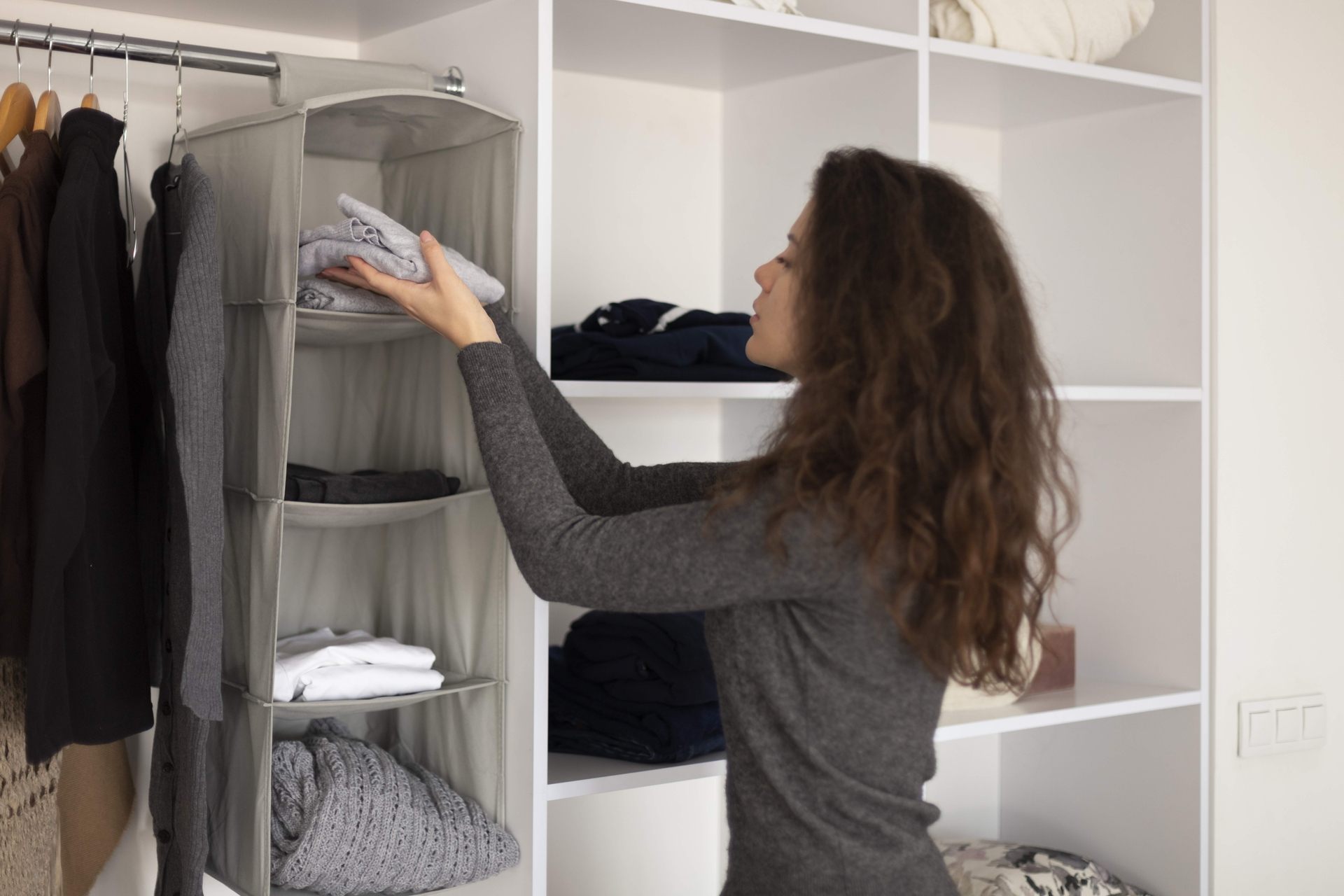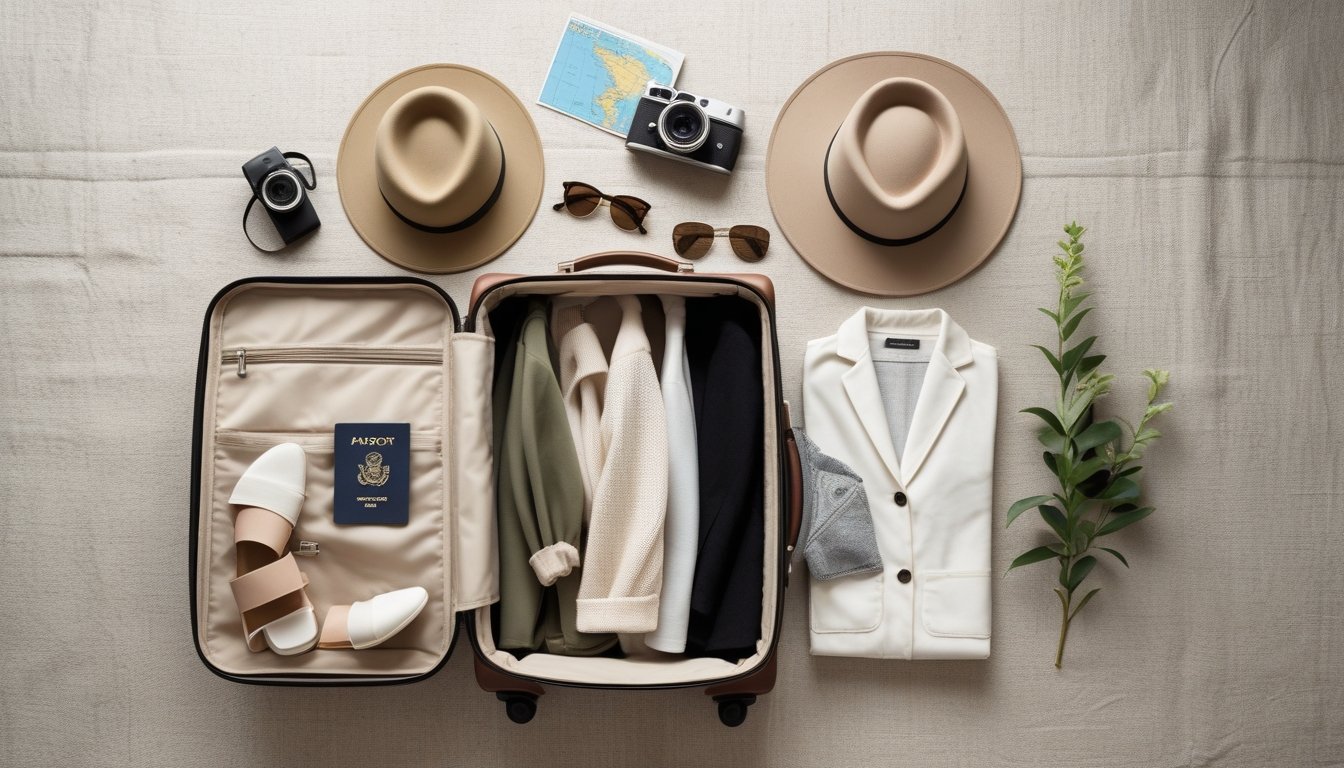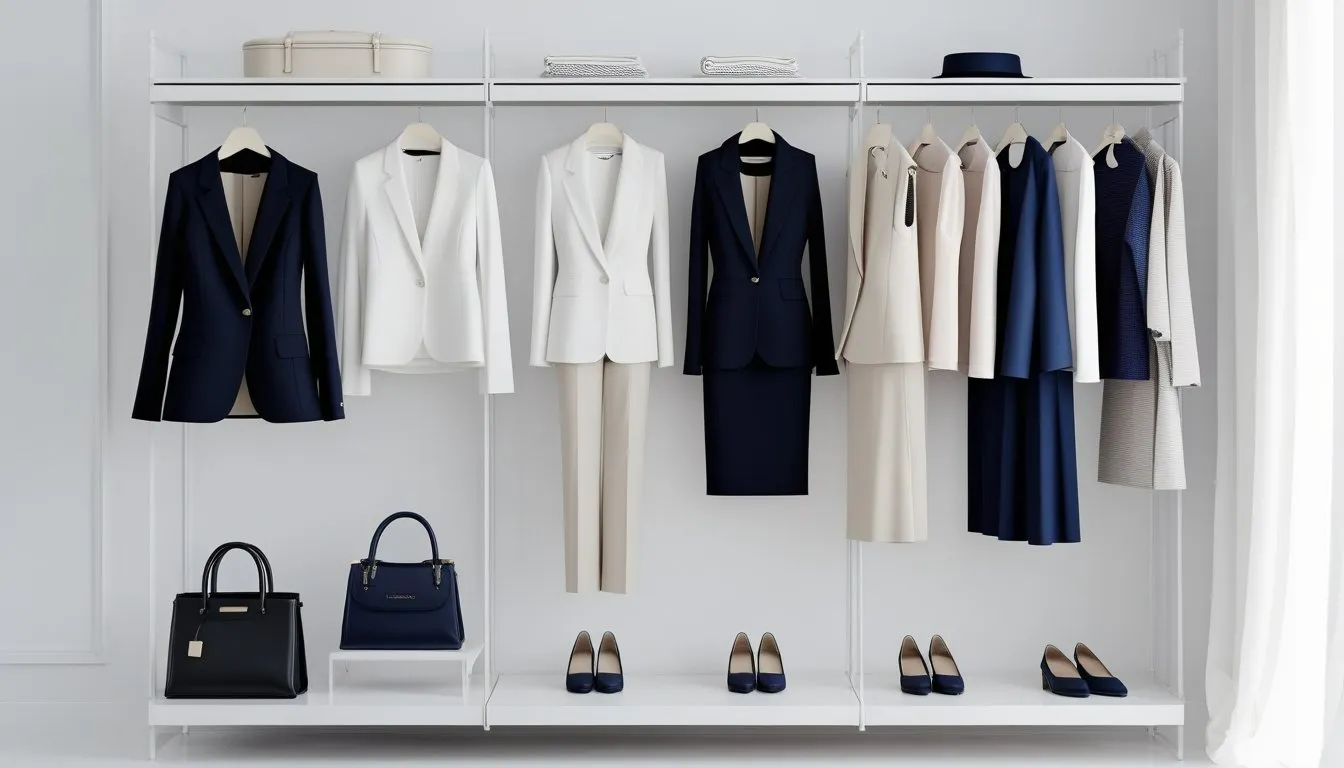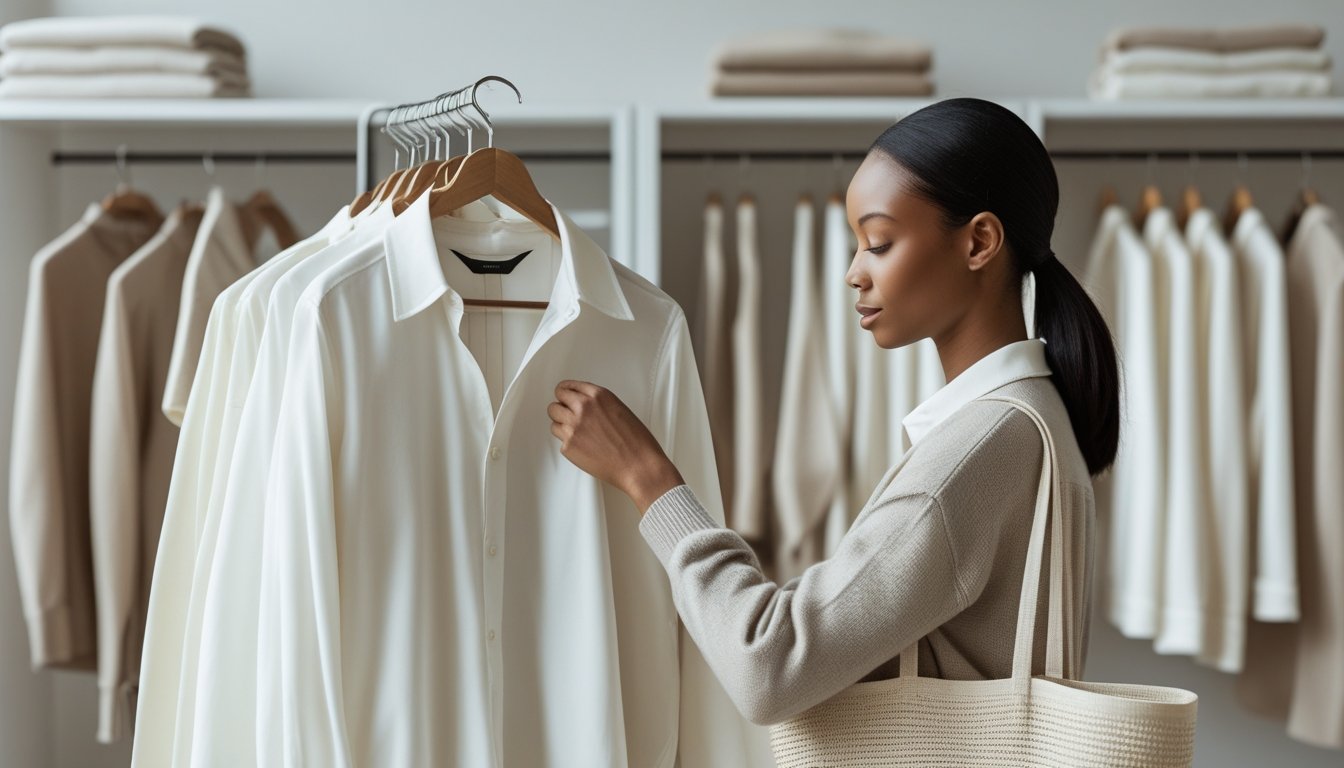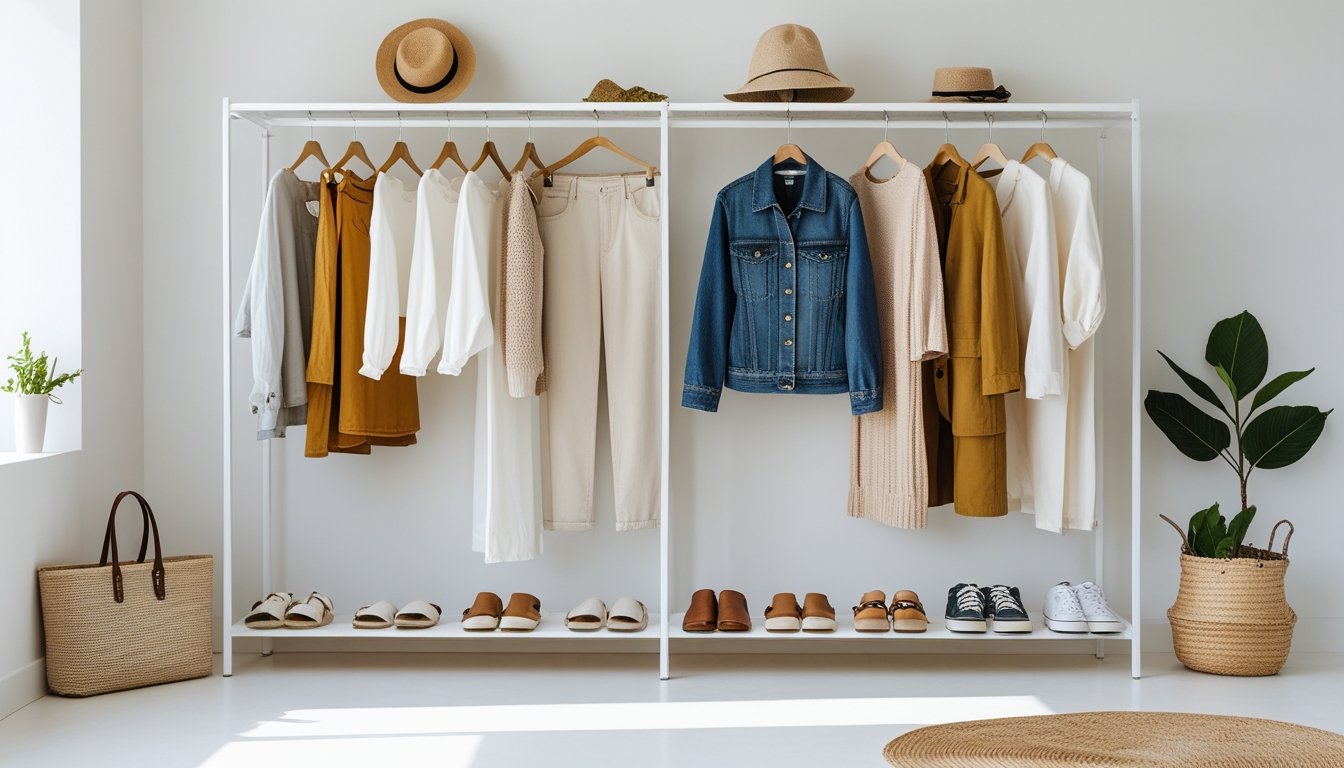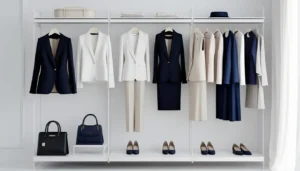1. Introduction
Let’s face it — most of us have opened our closets, stared at rows of clothes, and still thought, “I have nothing to wear.” It’s one of the most common fashion frustrations out there. From impulse buys to seasonal trends that fizzle out quickly, our wardrobes often end up cluttered with items we rarely wear. The result? A chaotic closet and constant outfit indecision. But what if there were a simple rule to bring order to your wardrobe and make getting dressed a breeze?
Enter the 70/30 wardrobe rule — a styling approach that fashion editors, personal stylists, and minimalist dressers swear by. It’s not a strict formula, but a smart strategy for curating a closet that actually works for your lifestyle. The idea is simple yet powerful: build 70% of your wardrobe with timeless, versatile basics, and reserve 30% for fun, trendy, or seasonal pieces.
This balance allows you to express your personal style without falling into the trap of overconsumption or constantly chasing fashion trends. Whether you’re someone who loves a capsule wardrobe or a fashion enthusiast who enjoys experimenting with bold styles, the 70/30 rule gives you structure while still leaving room for creativity.
In this post, we’ll break down what the 70/30 wardrobe rule is, why it’s so effective, and how you can apply it to your closet today. You’ll learn practical steps to identify your core staples, mix in personality with flair, and avoid the common wardrobe pitfalls that keep you in style limbo. By the end, you’ll have the tools to build a wardrobe that’s not only stylish and efficient — but also truly reflects you.
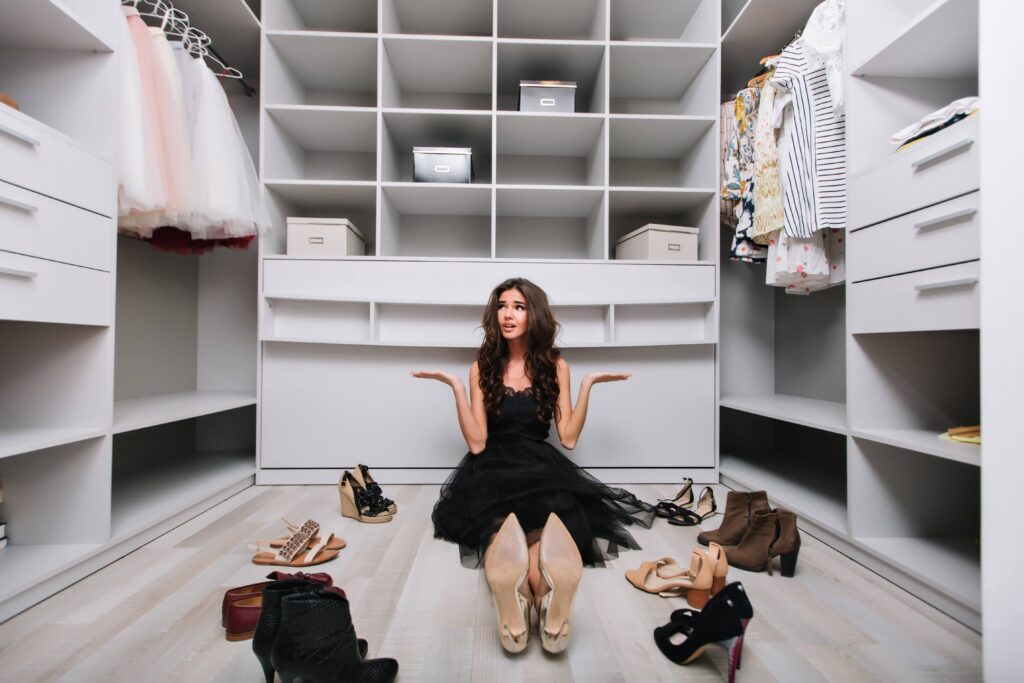
2. What is the 70/30 Wardrobe Rule?
The 70/30 wardrobe rule is a smart, flexible style formula that helps you create a functional, balanced, and stylish wardrobe. The idea is simple: 70% of your clothing should be timeless, versatile basics, while 30% can be reserved for trendy, seasonal, or statement pieces. This balance allows you to build a closet that works year-round, with the right blend of practicality and personal flair.
Let’s break it down:
The 70%: Your Foundation
This majority portion of your wardrobe includes clothing that doesn’t go out of style and can be mixed and matched effortlessly. Think of classic white shirts, well-fitted jeans, black trousers, neutral blazers, basic tees, a little black dress, and comfortable sneakers or loafers. These are your go-to items — the reliable pieces that you can reach for in a rush and still look put together.
These basics form the core of your daily outfits. They’re typically neutral in color, high in quality, and made for multiple uses. The best part? They make it easier to get dressed every day because they all work well together.
The 30%: Your Personality Pieces
This is where the fun comes in. The 30% is your chance to showcase your personality and explore current trends without going overboard. These items could include bright prints, bold accessories, statement jackets, seasonal colors, or trendy silhouettes. They add spice to your outfit and help you feel more expressive and up-to-date.
The genius of the 70/30 rule lies in its flexibility. It’s not a rigid system — it’s a guideline. You can adjust the ratio slightly based on your lifestyle or preferences, but sticking close to it helps ensure your closet is wearable, exciting, and easy to manage.
In short, the 70/30 rule is your shortcut to a stylish, stress-free wardrobe that still feels uniquely you.

3. Why This Rule Works Like Magic
The beauty of the 70/30 wardrobe rule lies in its simplicity and effectiveness. It doesn’t demand a total wardrobe overhaul or push you to adopt a strict minimalist lifestyle. Instead, it offers a realistic framework that works with how most people actually live and dress. Let’s explore why this wardrobe trick feels like magic — and why once you try it, you won’t look back.
1. It Reduces Decision Fatigue
We make countless decisions each day, and choosing what to wear can often be one of the most draining. With a wardrobe built on 70% reliable basics, you don’t have to overthink every outfit. Your core pieces all mix and match easily, making it quicker to put together outfits that look great. Less time staring at your closet, more time starting your day.
2. It Keeps Your Style Consistent
When your wardrobe is anchored in versatile, timeless clothing, you naturally develop a cohesive style identity. You’re less likely to bounce between random fashion phases and more likely to refine a look that’s truly yours. The 30% trendy side lets you stay fresh without losing that consistency.
3. It Saves You Money
It’s common to invest in trendy items that get worn just once before being tucked away and forgotten. The 70/30 rule helps you avoid wasting money on trends that fade fast. By prioritizing long-lasting basics, you’re investing in clothes that pay off with repeated wear. Your 30% budget can go toward playful extras — without guilt.
4. It Works for Any Lifestyle
Whether you’re a busy professional, a stay-at-home parent, or someone who works remotely, this rule adapts to your needs. Your “essentials” might differ, but the 70/30 approach remains the same: dependable base, with room for style exploration.
Honestly, the 70/30 wardrobe rule just makes getting dressed easier, cooler, and way less stressful. It’s fashion that finally makes sense.
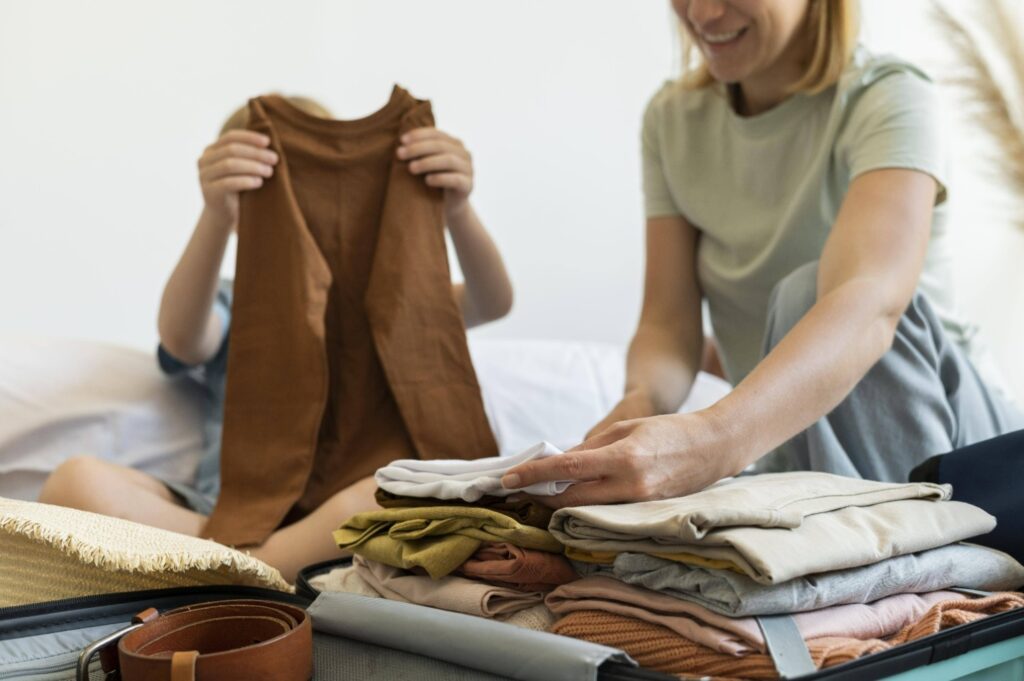
4. How to Build Your 70% Wardrobe (The Essentials)
Building the 70% portion of your wardrobe — the core essentials — is all about focusing on timeless, versatile, and high-quality pieces that form the foundation of your daily outfits. These are the clothes you can rely on in any season, for almost any occasion. They don’t scream for attention, but they make it easy to look effortlessly put-together.
What Qualifies as a “Basic”?
Timeless, versatile, and easy to style — basics are the foundation of any wardrobe. Examples include:
- A crisp white shirt
- A well-fitted pair of jeans
- A classic blazer
- A black pencil skirt
- Neutral sweaters
- A tailored coat
- Plain t-shirts in white, black, and gray
- A little black dress
- Comfortable, everyday shoes (like loafers, white sneakers, or ankle boots)
These items work across different looks — from workwear to weekend outfits — with minimal effort. They act like building blocks, making it easy to throw an outfit together, no matter the occasion.
Tips for Choosing the Right Basics
- Choose the neutrals that will not oudated such as black, white, beige, navy, and gray to keep your wardrobe versatile. They’re easier to pair with anything.
- Prioritize quality over quantity. It’s better to have one great blazer that lasts years than three that lose shape in a few months.
- Focus on fit. Tailoring makes a huge difference in how polished your basics look.
- Think about your lifestyle. If you work from home, your “essentials” may include soft, elevated loungewear instead of formal wear.
When done right, your 70% wardrobe will feel like a capsule collection — clean, curated, and ready for anything. Once this foundation is in place, adding your stylish 30% becomes both easier and more fun.
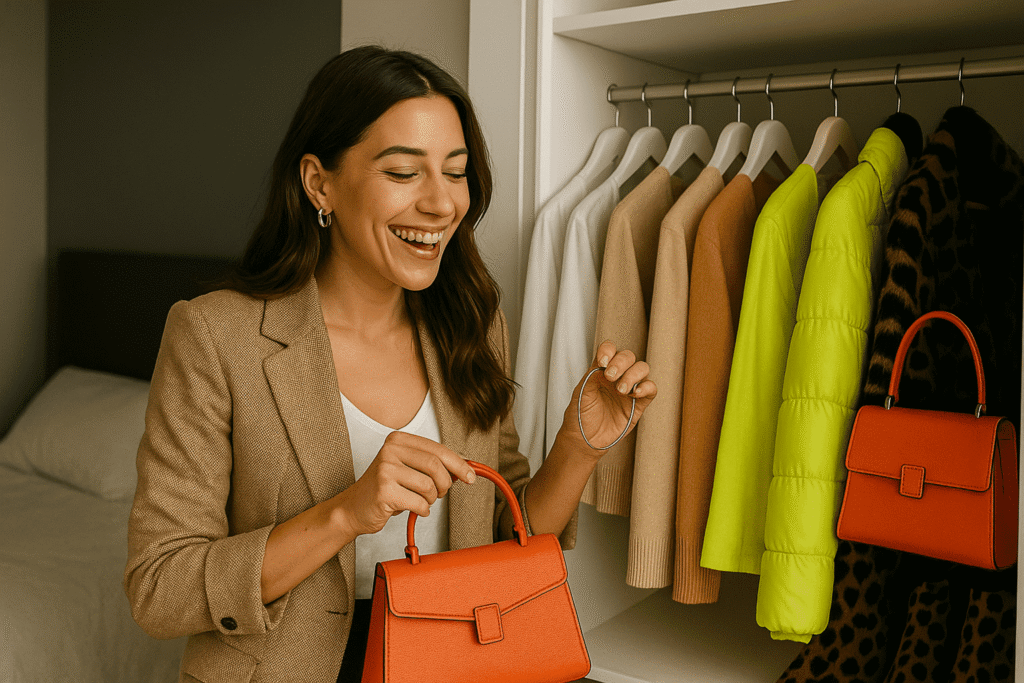
5. How to Pick Your 30% Style Pieces (The Fun Part)
Now that your 70% wardrobe is set with solid basics, it’s time to have a little fun. The remaining 30% of your wardrobe is where your personal style shines — this is your creative zone, your trend playground. These pieces are not necessarily “forever items,” but they’re what keep your outfits exciting, current, and uniquely you.
What Makes a 30% Piece?
Think of pieces that:
- Reflect current fashion trends
- Feature bold colors or unique prints
- Offer unusual silhouettes or textures
- Make a statement (hello sequins or fringe!)
- Are seasonal in nature (like a summer sundress or a faux fur coat)
For example, a bright orange handbag, animal print boots, a cropped neon jacket, or oversized hoop earrings all fall into the 30% category. These aren’t meant to be worn every day, but they are meant to add flavor to your everyday look.
How to Choose These Pieces Wisely
- Start with inspiration. Browse fashion blogs, Instagram, Pinterest, or street style pages to discover what trends excite you.
- Test trends before you commit. Fast fashion stores or secondhand shops are great places to experiment without a major investment.
- Balance with your basics. Your style pieces should complement your 70%, not compete with them.
- Avoid going overboard. It’s easy to fall in love with trends — but remember, it’s the accent, not the whole outfit.
A Bonus Tip
Seasonal swaps are perfect for this category. Refresh your 30% every few months to keep your wardrobe feeling new without needing a full reboot.
The best part about the 30%? It gives your wardrobe a pulse. It’s where trends meet personality, and where your fashion sense becomes unmistakably yours.

6. Real-Life Examples: Outfit Combos Using the 70/30 Rule
You’ve got your basics. You’ve got your statement pieces. This is very exciting: styling your wardrobe pieces into outfits! One of the best things about the 70/30 wardrobe rule is how easily it helps you create stylish, everyday outfits without overthinking. Here’s how this formula works in real-life scenarios — with outfit combinations that feel fresh, balanced, and totally wearable.
Example 1: The Effortless Work Look
- 70% basics: Black tailored pants + white button-down shirt + black loafers
- 30% style piece: Bright-colored blazer (like emerald green or hot pink)
This combo gives you a polished, professional look — but with a pop of personality thanks to the bold blazer. Swap the blazer seasonally, and you’ve got multiple outfit variations from just a few items.
Example 2: Casual Coffee Run
- 70% basics: High-waisted jeans + neutral crewneck sweater + white sneakers
- 30% style piece: Statement handbag or printed scarf
This look is relaxed but stylish. The base is comfy and versatile, while the accessory adds flair. Even swapping the scarf for oversized sunglasses or chunky earrings changes the vibe completely.
Example 3: Dinner With Friends
- 70% basics: A wardrobe-essential black dress teamed with neutral-toned heels for a clean, classic base.
- 30% style piece: Animal print clutch or bold red lipstick
The classic LBD is your ultimate go-to for effortlessly chic looks, no matter the event. But when paired with a standout accessory or dramatic makeup, it feels brand new every time.
Example 4: Weekend Getaway
- 70% basics: Denim jacket + white tee + khaki shorts
- 30% style piece: Colorful espadrilles or a floral kimono
You stay comfortable and classic while still adding vacation-ready vibes with one fun twist.
These combos prove that when 70% of your wardrobe works well together, that 30% can completely transform your look — making every outfit feel intentional, stylish, and totally you.
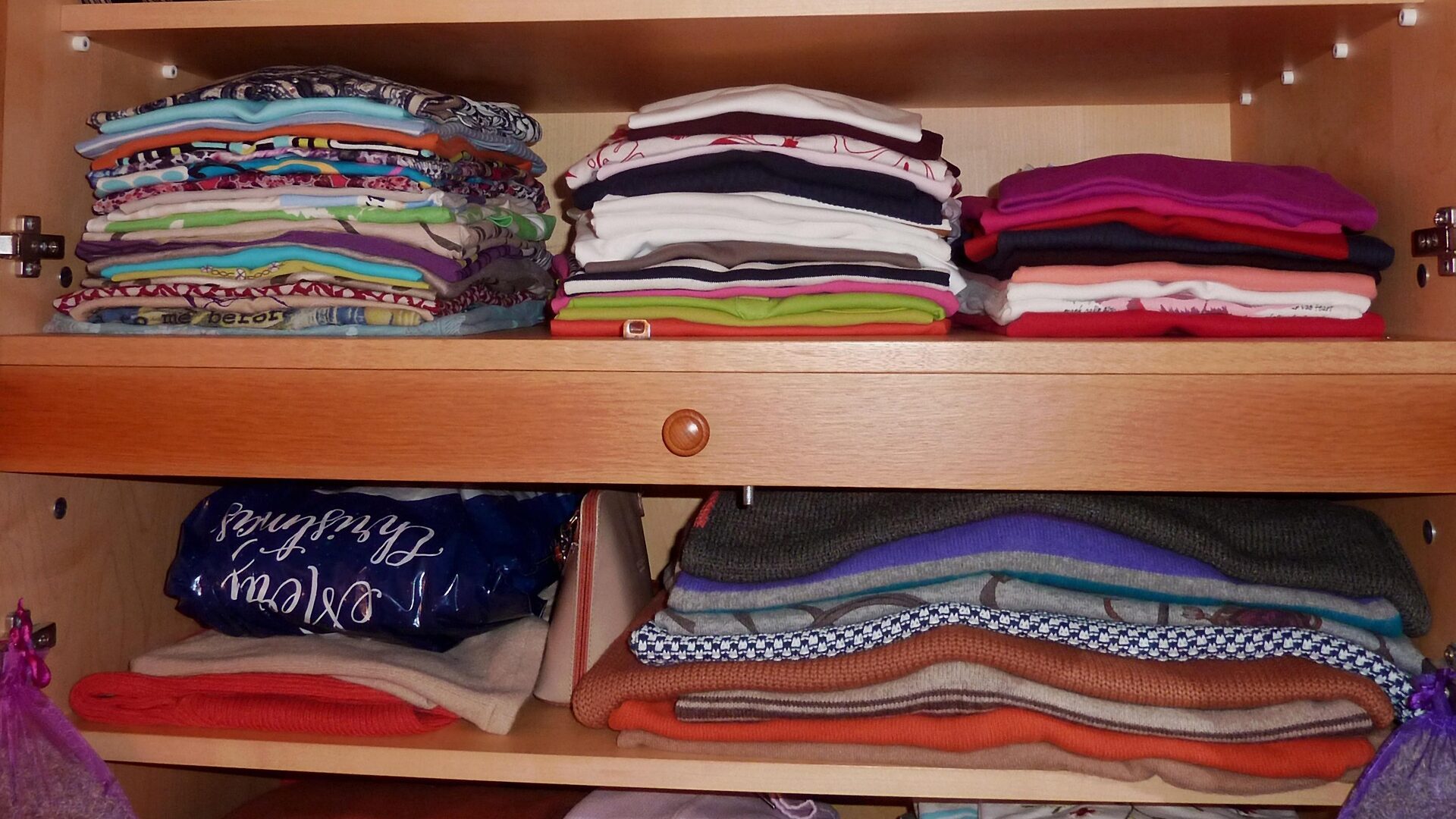
7. Tips for Transitioning to the 70/30 Wardrobe
Switching to the 70/30 wardrobe rule isn’t about throwing out everything you own and starting from scratch. You’re just making a smart, step-by-step shift to a more practical and planet-friendly way of dressing. Whether your closet is overflowing or you’re just trying to get more wear out of what you already have, these tips will help you make the transition with ease.
1. Start With a Closet Audit
Before you buy anything new, take a look of what you already have in your wardrobe. Sort your clothes into three categories:
- Timeless basics (likely your future 70%)
- Trendy or seasonal pieces (potential 30%)
- Rarely worn or low-quality items (consider donating or recycling)
Be honest with yourself about what you actually wear vs. what’s just taking up space.
2. Build Your Basics Slowly
Don’t feel pressure to buy every basic item all at once. Focus on replacing gaps one category at a time — a good pair of jeans this month, a quality blazer next month. Prioritize fit, quality, and color versatility.
3. Shop More Intentionally
Before you buy something new, ask yourself:
- Can I mix and match this piece into at least three outfits?
- Does it work with what I already own?
- Is this a staple or a style piece?
This approach helps you to follow the 70/30 ratio and avoid unnecessary purchases.
4. Rotate Your 30% Regularly
Trends change, and so will your preferences. Give yourself permission to refresh the 30% seasonally or as your lifestyle evolves. Consider renting fashion or thrifting to keep it budget-friendly.
5. Stay Flexible
The 70/30 rule isn’t rigid — it’s a guide. Some months you might lean 80/20, and that’s okay. The goal is balance, not perfection.
Adopting this rule over time will leave you with a wardrobe that’s not just stylish, but also more aligned with how you actually live, feel, and express yourself.
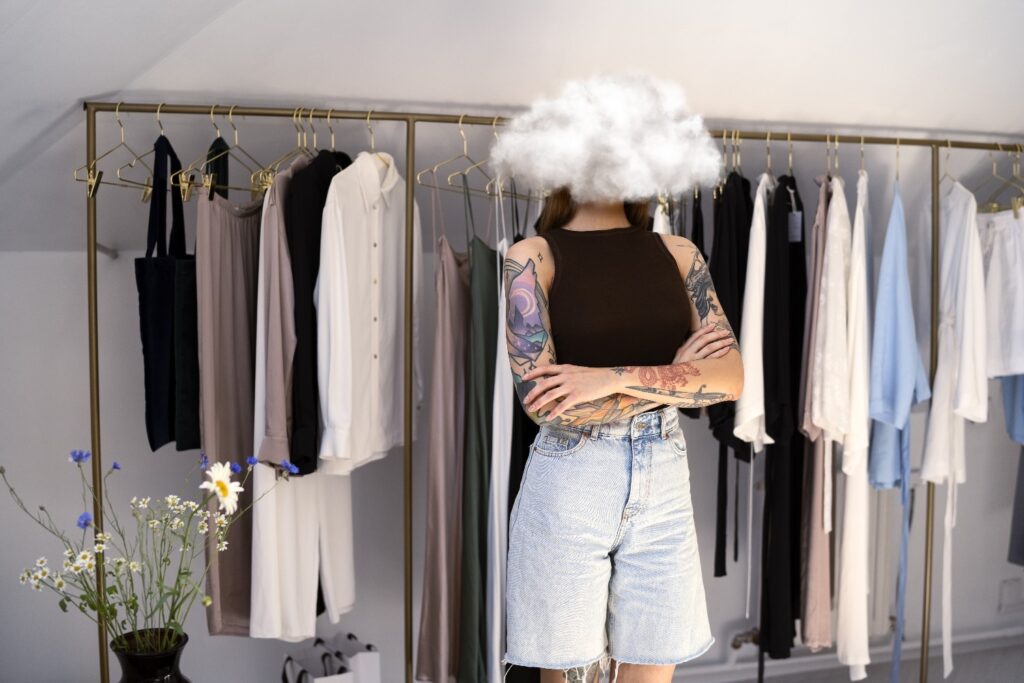
8. Final Thoughts: Is the 70/30 Rule Right for You?
If you’ve ever stood in front of a closet full of clothes and felt like you had “nothing to wear,” the 70/30 wardrobe rule might be exactly what you need. It’s not a strict fashion law — it’s a flexible mindset that encourages intentional shopping, better outfit combinations, and a closet that actually works for your lifestyle.
Why It Works for Most People
Whether you’re a minimalist, a fashion lover, or somewhere in between, the 70/30 rule fits because it’s all about balance. It gives structure to your wardrobe while still allowing room for creativity and fun. You don’t have to sacrifice personal style in the name of simplicity. Instead, you get the best of both worlds:
- A functional, mix-and-match base (the 70%)
- Think of the 30% as your chance to play with fashion and show the world what makes your style unique.
It’s also ideal for people who want to save money, reduce waste, and shop with purpose — all without giving up on style.
Is It for Everyone?
The truth is: almost anyone can benefit from this rule, but how you apply it will depend on your lifestyle. A corporate professional might fill their 70% with blazers and trousers, while a remote worker might focus on cozy essentials. The 30% could be loud and bold for one person and soft and artsy for another. That’s an amazing thing — you make it your own.
The Bottom Line
The 70/30 wardrobe rule is a simple, powerful trick that brings clarity to your closet, saves time getting dressed, and makes fashion feel easy again. It will motivate you to spend less, buy less, style yourself in a good way.
If you’re tired of chaotic closets and wasteful spending, this rule might just be the style refresh you’ve been looking for.

